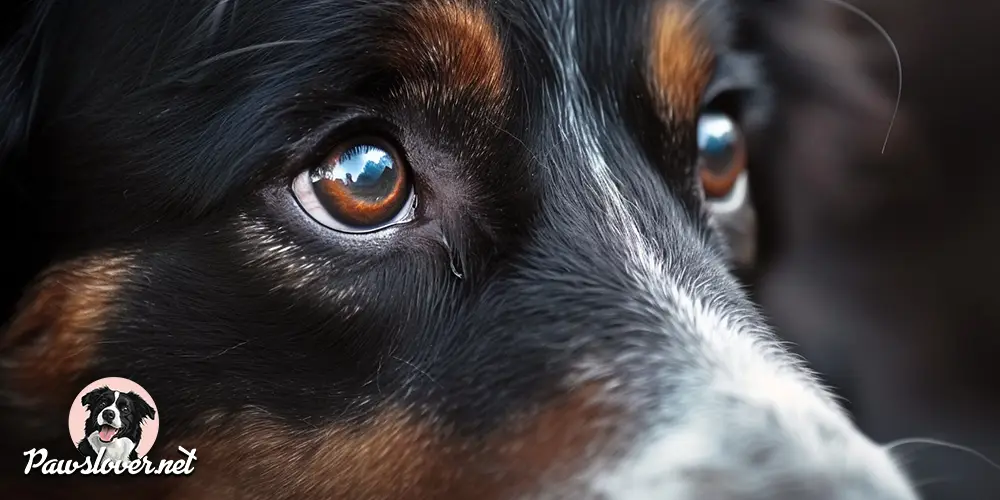The Australian Shepherd: A Ball of Fluff with Boundless Energy
Ever seen a dog with mesmerizing eyes and a coat as colorful as a sunset? Then you’ve likely crossed paths with an Australian Shepherd, or an Aussie for short! These energetic and intelligent pups are known for their devotion, playful spirit, and impressive work ethic. But are they the right fit for your lifestyle? Dive into our guide to learn everything you need to know about this captivating breed.
Australian Shepherd Breed in a Nutshell
| Feature | Description |
|---|---|
| Official Name | Australian Shepherd |
| Other Names | Aussie |
| Coat Length | Medium |
| Dog Height | 18-23 inches (at the shoulder) |
| Dog Weight | 40-65 pounds |
| Lifespan | 12-15 years |
| Temperament | Intelligent, Loyal, Energetic |
| Energy Level | Very High |
| Exercise Needs | Extensive Daily Exercise |
| Intelligence | Highly Intelligent |
| For What Type of Person | Active Individuals, Families with Older Children, Busy Households |
| Other Information | Strong Herding Instinct, Loyal, Keen Learner |
The Australian Shepherd, with their piercing eyes and boundless energy, might surprise you with their origins. Despite the name, Aussies aren’t actually from Australia! They hail from the ranch lands of the American West, developed in the 19th century by shepherds who needed hardworking companions to manage their flocks. These clever dogs, likely descendants of European herding breeds, quickly earned a reputation for their intelligence, stamina, and unwavering loyalty.

They weren’t just ranch hands, though. Aussies proved to be versatile superstars, adept at herding sheep, cattle, and even horses. Their eagerness to please and exceptional trainability made them invaluable partners for cowboys traversing the vast Western plains. As dog shows gained popularity in the 20th century, the Aussie’s charm and impressive skills captured the hearts of audiences beyond the ranching world. Today, Australian Shepherds are beloved family companions, agility champions, and even therapy dogs, bringing their enthusiasm and intelligence to a variety of roles.
History of the Breed
The exact origins of the Australian Shepherd remain a bit hazy, much like a dusty trail at sunset. While some theories suggest a direct link to Australian herding dogs imported to the US, most experts believe the breed is a true melting pot. Spanish Shepherds brought by Basque immigrants, Collies from Scotland, and even Border Collies likely all played a part in the Aussie’s development.
What’s undeniable is the ingenuity of the American ranchers who bred these remarkable dogs. They needed companions who could handle the harsh conditions of the West: intelligent enough to learn complex herding commands, athletic enough to tirelessly manage large flocks, and fiercely loyal to protect their charges from predators. The resulting breed, the Australian Shepherd, embodied these qualities perfectly.
Temperament
Australian Shepherds are like furry bundles of sunshine – energetic, enthusiastic, and eager to please. Their intelligence is legendary, making them highly trainable and quick learners. They thrive on mental and physical stimulation, always up for a challenge or a game of fetch. This boundless energy can be a double-edged sword; an Aussie who doesn’t get enough exercise can become bored and destructive.
Despite their herding background, Aussies are generally gentle and friendly with humans, especially children raised alongside them. However, their strong herding instinct might manifest as nipping at heels or trying to herd younger kids. Proper socialization from a young age is key to ensure your Aussie sees everyone as part of the pack, not the flock.
These loyal companions form strong bonds with their families, showering them with affection and playful spirit. They are naturally protective and watchful, making them excellent watchdogs. However, their alertness can sometimes tip into excessive barking if not properly trained and socialized.

Exercise Needs
An Australian Shepherd is not a couch potato. In fact, calling them energetic is an understatement. These dogs were bred to work tirelessly for hours on end, and their exercise needs reflect that. Plan on providing your Aussie with at least two hours of vigorous exercise every single day. This could include activities like:
- Long walks or runs: Let your Aussie unleash their inner athlete with a good jaunt through the park or a jog alongside your bike.
- Herding games: Channel their herding instincts with games that involve chasing toys or balls, or even enroll them in herding trials for a true mental and physical workout.
- Agility training: Aussies excel in agility courses, which combine physical challenges with mental stimulation. They’ll love navigating the obstacles and showing off their impressive skills.
- Swimming: If you have access to a safe swimming area, Aussies can burn off energy with a refreshing dip. Just be sure to supervise them closely and provide a life jacket if needed.
Remember, a tired Aussie is a happy Aussie (and a less destructive one!). If you can’t dedicate a significant amount of time to daily exercise, an Australian Shepherd might not be the best fit for your lifestyle.
Nutrition Needs
Just like their exercise needs, an Aussie’s diet requires careful consideration. These active pups require high-quality food formulated for active breeds. Look for kibble or wet food rich in protein and healthy fats to fuel their energetic bodies. The exact amount of food will depend on your Aussie’s age, weight, and activity level, so consult with your veterinarian to determine the optimal feeding schedule and portion sizes.
Check out our Best Food review in this post
Here are some additional tips for your Aussie’s nutrition:
- Fresh, clean water should be readily available at all times.
- Avoid overfeeding, as obesity can lead to joint problems later in life.
- Talk to your veterinarian about any dietary supplements that might be beneficial for your Aussie’s specific needs.
- Be mindful of table scraps and unhealthy treats, as these can contribute to weight gain and digestive issues.
By providing your Aussie with a balanced diet and plenty of exercise, you’ll ensure they stay healthy, happy, and ready for their next adventure.

Care and Grooming Needs
Australian Shepherds are relatively low-maintenance when it comes to grooming, but that doesn’t mean they can be neglected entirely. Their beautiful double coat, while weather-resistant, requires regular brushing to prevent matting and shedding. Brushing 2-3 times a week with a slicker brush and a de-shedding tool during shedding seasons (usually spring and fall) will help remove loose hair and keep their coat healthy. An occasional bath with a dog-friendly shampoo (every 6-8 weeks or as needed) can be helpful, but avoid over-bathing which can strip their coat of natural oils.
Beyond brushing, regular ear cleaning with a vet-recommended solution helps prevent infections. Check their ears weekly for any redness, discharge, or unpleasant odor, which could indicate an issue. Nail trimming is also important to prevent overgrown nails from becoming uncomfortable or causing them to snag on something.
Dental hygiene is crucial for your Aussie’s overall health. Brushing their teeth with a dog-specific toothpaste a few times a week can help prevent dental disease and maintain fresh breath. Dental chews designed for dogs can also be beneficial. Schedule regular veterinary checkups, which often include dental examinations, to ensure your Aussie’s oral health remains in top shape.
Remember, early socialization and obedience training are essential for any dog, but especially for an intelligent and energetic breed like the Australian Shepherd. Expose your Aussie to new people, places, and experiences from a young age to ensure they become well-adjusted and confident companions. Positive reinforcement training methods work best with Aussies, as they are eager to please and respond well to rewards and praise.

Health
Australian Shepherds are generally healthy dogs with a lifespan of 12-15 years. However, like all breeds, they are predisposed to certain health conditions. Here’s a brief overview:
- Hip Dysplasia: This common condition involves the abnormal development of the hip joint. Symptoms include lameness, difficulty getting up, and pain. Regular exercise and maintaining a healthy weight can help reduce the risk.
- Elbow Dysplasia: Similar to hip dysplasia, this affects the elbow joint. Signs include limping, stiffness, and pain in the front leg.
- Eye Diseases: Certain eye conditions, such as cataracts and Collie eye anomaly, can occur in Aussies. Regular veterinary checkups are important for early detection and treatment.
- Epilepsy: Some Australian Shepherds may be prone to seizures. If you notice your dog experiencing seizures, consult your veterinarian immediately.
Responsible breeders screen their breeding stock for these conditions to minimize the risk of passing them on to offspring. Purchasing an Aussie puppy from a reputable breeder who prioritizes health and temperament is highly recommended. Regular veterinary checkups throughout your Aussie’s life are vital for early detection and treatment of any potential health concerns.
Should You Have an Australian Shepherd as a Pet?
Australian Shepherds are incredible dogs, but they are not for everyone. Here’s a quick guide to help you decide if an Aussie is the right furry friend for you:
Ideal Match:
- Active individuals: If you lead an active lifestyle and enjoy outdoor adventures, an Aussie can be your perfect partner in crime.
- Families with older children: Aussies can be wonderful companions for older children who can participate in playtime and activities. However, proper supervision is necessary with younger children due to the herding instinct.
- Busy households: As long as you can provide ample exercise and mental stimulation, Aussies can thrive in busy environments.
Consider Another Breed If:
- You have a sedentary lifestyle: An under-exercised Aussie can become bored and destructive.
- You live in a small apartment: These energetic dogs need space to run and play.
- You prefer a quiet dog: Aussies can be vocal and alert, so be prepared for some barking.
Ultimately, the decision to welcome an Australian Shepherd into your home is a personal one. If you can provide a loving and active environment, an Aussie will reward you with unwavering loyalty, playful spirit, and a lifetime of companionship.

Fun Facts About Australian Shepherds
Australian Shepherds are a breed full of surprises! Here are a few quirky facts to add to your Aussie knowledge:
- The “Smiling Aussie”: Many Aussies have a natural upward turn to the corners of their mouth, making them appear to be perpetually smiling. This adds to their friendly and approachable expression.
- Wool Power: Believe it or not, there are actually two coat types for Australian Shepherds: smooth and double coat. The double coat, the more common one, features a dense undercoat and a medium-length topcoat, offering excellent insulation against harsh weather.
- Hidden Talents: Aussies excel in various dog sports beyond herding. They are naturals at agility courses, disc dog competitions, and even obedience trials. Their intelligence and eagerness to please make them highly trainable.
- Nicknames Galore: Aussies have earned a variety of nicknames over the years, including “Aussie Dog,” “American Shepherd,” and even the less formal “Miniature Collie” (though they are not actually related to Collies!).
- Celeb Fans: Australian Shepherds have charmed their way into the hearts of many celebrities, including Alyssa Milano, Amanda Seyfried, Luke Perry, Jessica Biel, and even royalty – Queen Elizabeth II is said to be a big fan of the breed!
Owning an Australian Shepherd is an adventure. Their boundless energy, intelligence, and unwavering loyalty make them truly special companions. So, if you’re looking for a dog who will keep you active, challenge your mind, and shower you with affection, an Australian Shepherd might just be your perfect match.